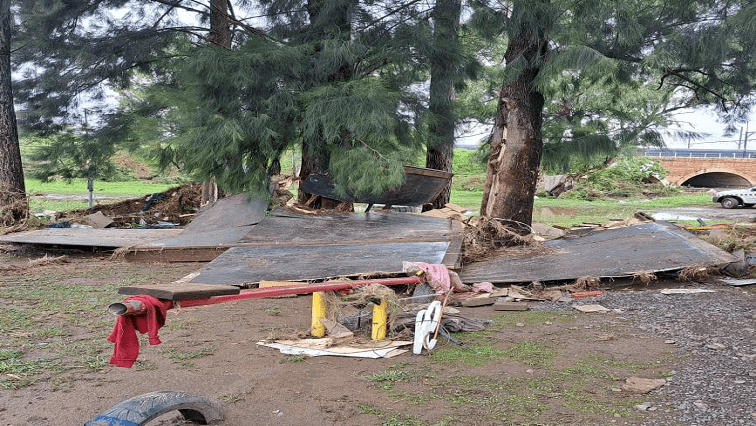Consulting engineers say measures recommended to government authorities to reduce flooding in Ladysmith, KwaZulu-Natal, appear not to have been implemented.
The engineers say the measures recommended could have saved lives and prevented damage to infrastructure. The town suffered two devastating floods within a period of two weeks recently.
The Christmas Eve floods claimed 25 lives and last week’s floods caused damage to businesses and infrastructure.
Experts say that Ladysmith’s location in the uThukela catchment area at the foothills of the Drakensberg is directly linked to its ongoing flooding problem. The town was established on the flood-plain of the Klip River in 1851 by the British Imperial government as protection in the then-annexed, Natal.
As the town developed along the meander of the river, it experienced periodic flooding.
Since the 1940s there’ve been efforts to contain flooding in the area. The Windsor dam was built in 1950, but silt build-up reduced its efficiency.
The Qedusizi dam further downstream in the Klip River was completed in 1997 to take over the task of flood management.
In the report commissioned by the municipality, engineers pointed out that the main causes of flooding in the area were among others, Ladysmith’s peculiar locality on a flood-plain, siltation, and a lack of maintenance of the Klip River meander among others.
They recommended that the most practical and attainable solution would be to carry out a full dredging of the riverbed. This would, however, need the support of the national government. It was found that the river had lost 75% of its carrying capacity.
But consulting engineer Dr Nezar Eldidy emphasises that maintenance remains one of the most pressing issues. “You can’t keep building a dam for a dam. Any engineering system that you put in place you must maintain, instead of desilting dams, you build a new dam.”
Budget constraints
The municipality says it began dredging the river, but that the R14-million funding it received simply was not enough to address the problem. Zama Sibisi, the Alfred Duma municipal mayor, says they have had to repair and replace the valves from its municipal budget.
“W fixed 11 valves on the river and we attended to the river – digging it to try and increase the volume that the river can carry. Because that was one of the concerns that the volume of water the Klip River can carry now has decreased with 75%. So we did all that. Yes, it worked a bit. Like, last year we experienced this flooding but it wasn’t that severe.”
Sibisi says he’s asked for a report on whether the recommended valves were installed.
Meanwhile, Eldidy says the two recent catastrophic floods have shown that urgent action is needed to prevent loss of life and damage to property and infrastructure.
“First of all I would replace the valves as recommended and embark on the work of the dredging of the river and to put in a pump station and transport the water and evacuate to accumulated another area.”
The provincial government earlier estimated that R1 billion was needed to repair infrastructure and to implement the permanent solutions recommended by experts in Ladysmith.
Spotlight on Ladysmith floods:






